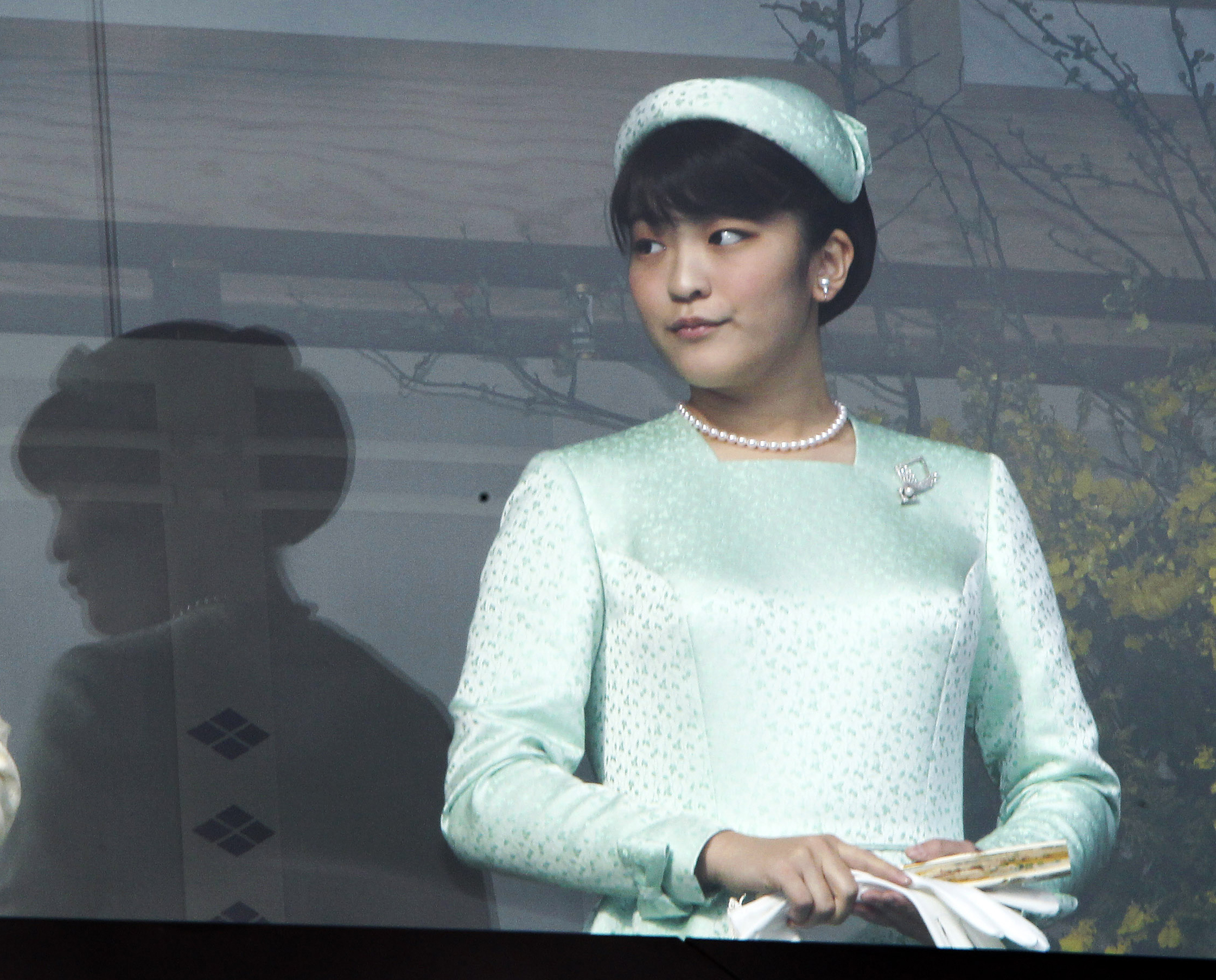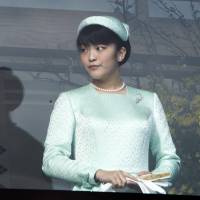Princess Mako, the eldest grandchild of Emperor Akihito, and her former fellow student and soon-to-be fiance Kei Komuro are set to go through a number of rituals and procedures before their wedding.
In a traditional rite of betrothal called Nosai no Gi, Komuro's messenger will have to visit the Imperial Palace with gifts to officially make a vow of engagement.
Then the date of their wedding will be announced by Komuro's messenger visiting the palace in a rite known as Kokki no Gi.
When a female Imperial family member becomes a commoner through marriage, the state pays her a lump sum allowance. By law, an eight-member council meeting, including the prime minister, will determine the amount.
When Sayako Kuroda, the only daughter of Emperor Akihito and Empress Michiko, married a commoner in 2005, she received about ¥150 million ($1.3 million), while Noriko Senge, daughter of the Emperor's late cousin Prince Takamado, was given close to ¥100 million when she married the eldest son of the chief priest of Izumo Taisha, a Shinto shrine in Shimane Prefecture, in 2014.
As their wedding date nears, more rites are set to take place including Choken no Gi, in which Princess Mako will express her appreciation for the Emperor and the Empress.
On the day of their wedding, a messenger from the groom's side will come to collect the princess at the palace in a rite called Judai no Gi, before commencing the wedding.
Kuroda's wedding was held at Tokyo's Imperial Hotel while Senge's was held at the Izumo Taisha Shrine.
By submitting a marriage notification, Princess Mako will no longer be part of the Imperial family and will be registered as an ordinary citizen. She will be given voting and other rights.




